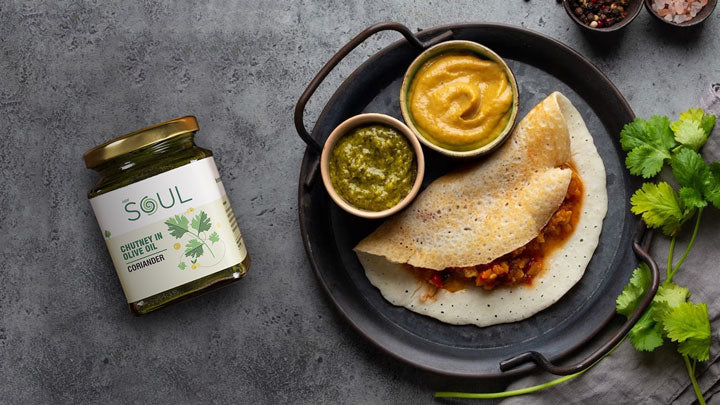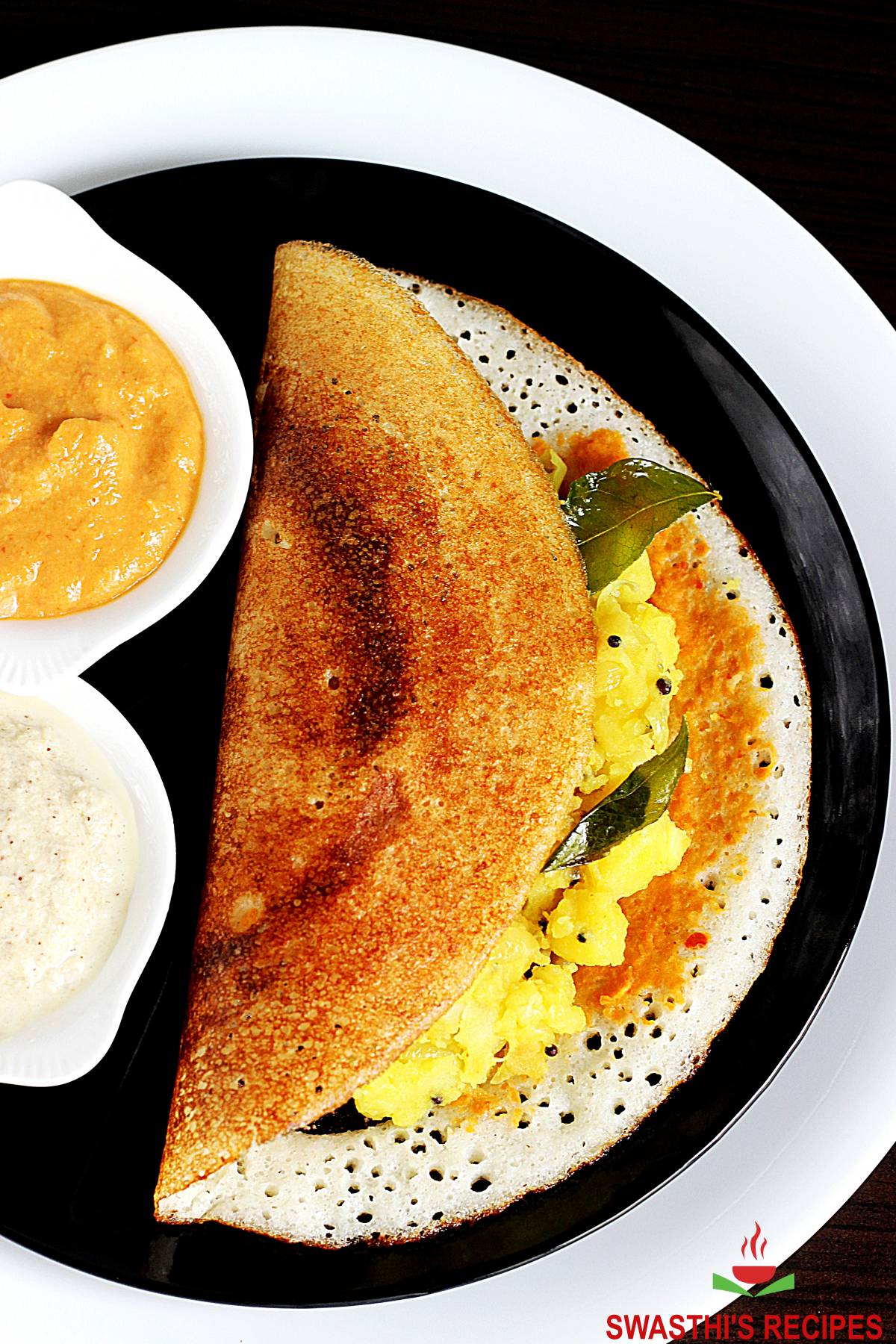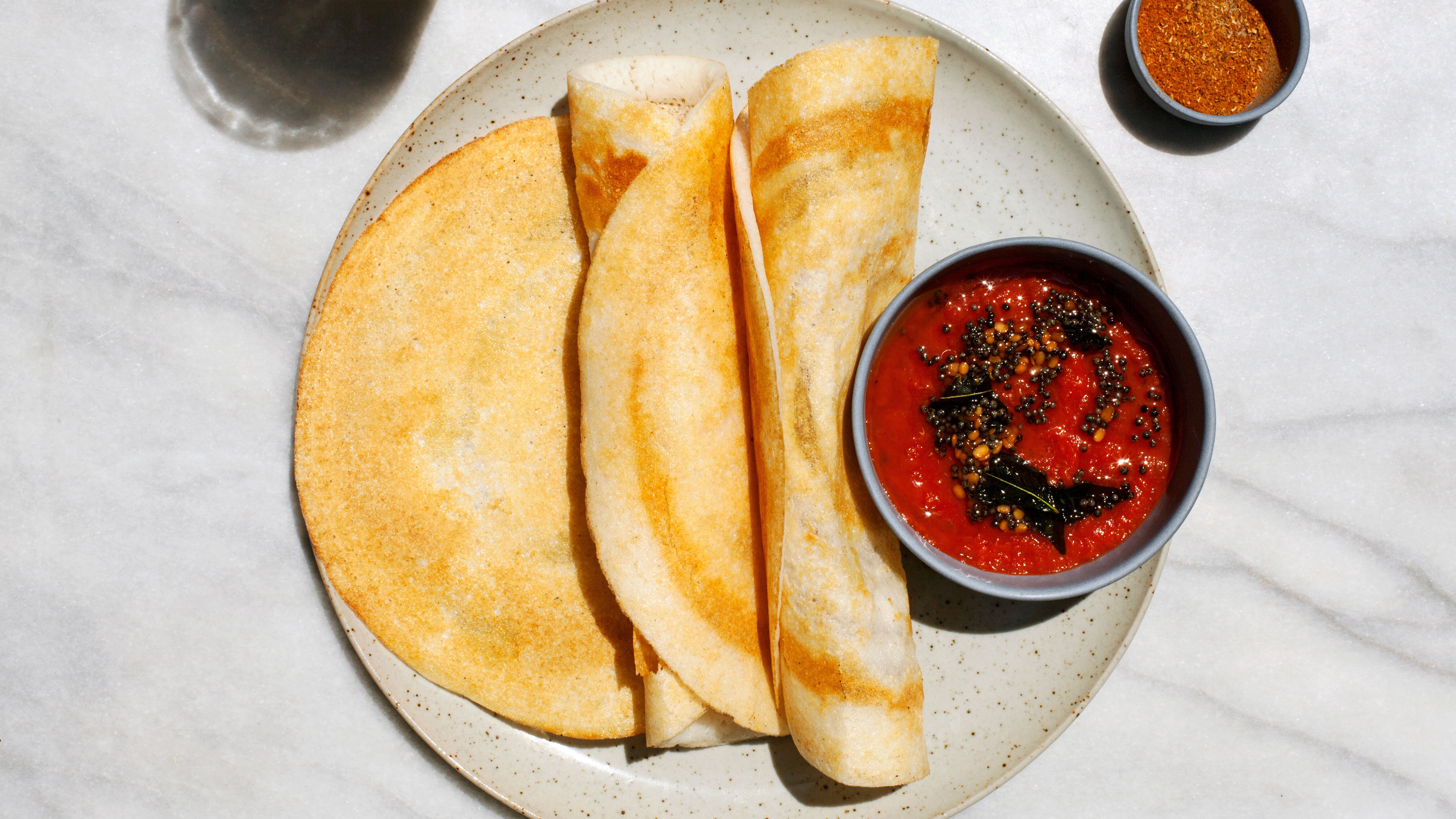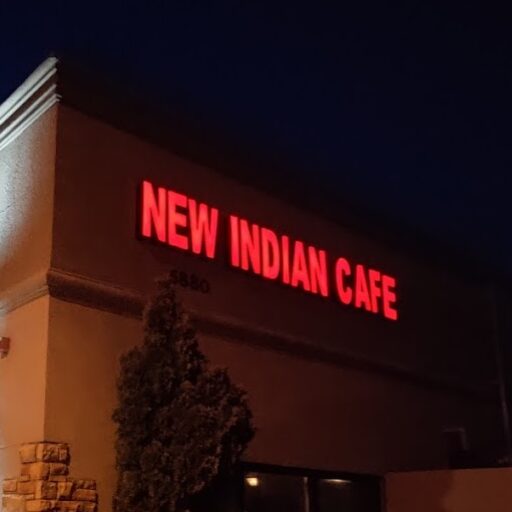
Introduction
What Is A Dosa?
A dosa is a popular South Indian dish that has gained worldwide popularity. It is made from a fermented batter consisting of rice and black gram, also known as urad dal. The batter is spread thin on a hot griddle and cooked until it becomes crispy and golden brown. Dosas are typically served with a variety of chutneys and sambar, a lentil-based soup.
Significance Of Dosas In Indian Cuisine
Dosas have a long history in Indian cuisine, particularly in the South Indian state of Tamil Nadu. They are believed to have originated several hundred years ago and have since become a staple in the region. Dosas are not only delicious, but they also offer several health benefits. Due to the fermentation process, dosas are easier to digest compared to other Indian breads. They are also low in calories and can be made with gluten-free ingredients, making them suitable for those with dietary restrictions.
In recent years, dosas have gained popularity outside of India and can now be found in many Indian restaurants around the world. The versatile nature of dosas has led to various adaptations and innovations in different cuisines. For example, cheese dosas have become a popular variation, where cheese is added as a topping or filling.
Dosas are not just a breakfast or snack option in India; they are enjoyed throughout the day. The dosa menu is diverse and offers a wide range of options to suit different tastes and preferences. Some popular variations include masala dosa, where the dosa is stuffed with a spiced potato filling, and onion dosa, where chopped onions are added to the batter.
In conclusion, dosas are a beloved dish in Indian cuisine, known for their crispy texture and delicious flavors. Whether enjoyed with traditional accompaniments or with modern twists, dosas continue to be a favorite amongst food lovers worldwide.
Historical Background
Origins Of Dosas And Their Traditional Recipe
Some historians suggest that dosas have been enjoyed for over 2000 years, dating back to the Sangam period in Tamil Nadu. Others believe they originated in the Udupi region of Karnataka. Traditionally, dosas were made using a mixture of rice and urad dal, which was soaked, ground, and left to ferment overnight. The fermentation process added a tangy flavor to the dosa and made it easier to digest.
Evolution Of Dosas: Addition Of Urad Dal / Black Lentils
Dosas have evolved over time, with one significant change being the addition of urad dal, also known as black gram. Including urad dal in the batter enhances the taste and texture of the dosa, resulting in a crispier and more flavorful end product. The combination of rice and urad dal also provides a good balance of carbohydrates and proteins.
The addition of urad dal has made dosas a staple in South Indian cuisine and has contributed to their popularity both within India and internationally. The unique combination of rice and urad dal, along with the fermentation process, sets dosas apart from other Indian breads and contributes to their distinct taste and texture.
Today, dosas are enjoyed throughout the day as a versatile dish that offers a wide range of choices. From the classic masala dosa with a spiced potato filling to variations like cheese dosas, there is a dosa to suit every taste and preference. Dosas have become a favorite among food lovers worldwide, not only for their delightful flavors but also for their health benefits. The fermentation process makes dosas easier to digest compared to other breads, and they can be made with gluten-free ingredients, making them suitable for those with dietary restrictions.
In conclusion, dosas have a rich historical background and have evolved over time to become a beloved dish in Indian cuisine. Their origins in Tamil Nadu and Karnataka, along with the addition of urad dal, have contributed to their unique taste and texture. Whether enjoyed with traditional accompaniments or innovative fillings, dosas continue to be a popular choice for food enthusiasts around the world.
Basic Dosa Recipe
Ingredients For Dosa Batter
• ½ cup urad dal (or whole skinned black gram)• 1 cup parboiled rice (or idli rice)• ¼ cup flattened rice (poha)• ½ teaspoon fenugreek seeds• Water, as needed for soaking and grinding• Salt, to taste
Step-by-step Instructions To Make Dosa Batter At Home
1. Wash the urad dal, rice, and fenugreek seeds separately under running water.2. Soak the urad dal and fenugreek seeds together in a bowl with enough water for at least 4-6 hours.3. Soak the rice and flattened rice together in another bowl with enough water for at least 4-6 hours.4. Drain the water from the soaked urad dal and fenugreek seeds. Grind them in a mixer or wet grinder, gradually adding water as needed, until you get a smooth and fluffy batter. The batter should have a light and frothy texture.5. Transfer the urad dal batter to a big bowl.6. Drain the water from the soaked rice and flattened rice. Grind them in a mixer or wet grinder, gradually adding water as needed, until you get a smooth batter. The batter should not be too thick or too runny.7. Add the rice batter to the urad dal batter in the bowl.8. Add salt to taste and mix well using your hands. Make sure the batter is evenly mixed and the salt is well-incorporated.9. Cover the bowl with a lid or a clean cloth and let the batter ferment overnight or for at least 8-10 hours. The fermentation process is important as it adds a tangy flavor to the dosas and makes them easier to digest.10. After fermentation, the batter will have risen and become slightly frothy. Mix the batter gently to release any excess air and incorporate it into the batter.11. The dosa batter is now ready to use. You can store the leftover batter in the refrigerator for up to 3-4 days.
By following these simple steps, you can make delicious dosas at home. Enjoy them with your favorite chutney, sambar, or filling of your choice. Experiment with different toppings and flavors to create your own unique dosa recipes. Happy cooking!

Types Of Dosas
Plain Dosa: The Classic Version
Plain dosa, also known as sada dosa, or plain dosa, is a popular South Indian dish that is enjoyed as a breakfast or snack. It is a simple yet delicious dish made from a fermented batter of rice, urad dal, fenugreek seeds, and flattened rice (poha). The dosa is thin and crispy on the outside, while the inside is soft and fluffy. It is typically served with sambar (a lentil and vegetable soup) and coconut chutney.
Masala Dosa: Dosa Filled With Potato Masala
Masala dosa is a variation of the classic dosa, where the dosa is filled with a flavorful potato masala. The dosa batter is spread thinly on a hot griddle, and a mixture of spiced mashed potatoes, onions, tomatoes, and curry leaves is placed in the center. The dosa is then folded over the filling, creating a delicious and satisfying dish. Masala dosas are best enjoyed when hot, as the moisture from the filling can make the dosa soggy if it sits for too long. They are often served with sambar and a variety of chutneys.
Other Variations Of Dosas
In addition to plain dosa and masala dosa, there are several other variations of dosas that can be found in different regions of India. Some popular variations include:
- Rava dosa: A crispy dosa made with a batter that includes semolina (rava) along with rice and urad dal.
- Mysore masala dosa: Similar to masala dosa, but with a spicy red chutney spread on the inside before adding the potato masala.
- Onion dosa: A dosa with chopped onions sprinkled on the batter before cooking, giving it a delicious crunch and flavor.
- Cheese dosa: A dosa topped with grated cheese, which melts and adds a creamy and cheesy element to the dish.
These are just a few examples of the wide variety of dosas that can be enjoyed. Each region and household may have their own unique twist on this beloved South Indian dish. Regardless of the variation, dosas are loved by food enthusiasts around the world for their crispy texture, comforting flavors, and versatility.
Health Benefits Of Dosas
Dosas As A Protein-rich Vegan Breakfast
- Dosas are an excellent choice for vegans looking to incorporate more plant-based protein into their diet. The combination of rice and urad dal in the dosa batter provides a complete protein source, making it a nutritious breakfast option.- Protein is essential for maintaining and repairing tissues, supporting the immune system, and promoting healthy hair, skin, and nails. By starting your day with a protein-rich dosa, you can power up your morning and stay satiated for longer.- Additionally, dosas contain gut-friendly bacteria due to the fermentation process, which can contribute to a healthy digestive system.
Nutritional Advantages Of Urad Dal In Dosas
- Urad dal, one of the main ingredients in dosa batter, offers several nutritional advantages. It is rich in protein, providing the essential amino acids needed for various bodily functions.- Urad dal is also a good source of dietary fiber, which aids in digestion, regulates blood sugar levels, and promotes a healthy weight.- Furthermore, urad dal contains calcium, a mineral necessary for maintaining strong bones and teeth. This makes dosas an excellent choice for individuals who follow a vegan or dairy-free diet and need alternative sources of calcium.- The inclusion of urad dal in dosas not only enhances their nutritional value but also adds a distinct flavor and texture.
In conclusion, dosas are a healthy and protein-rich vegan breakfast option that can provide numerous nutritional benefits. The combination of rice and urad dal in the dosa batter not only offers a complete protein source but also provides fiber and calcium. With its versatile flavors and variations, dosas continue to be a beloved dish that can be enjoyed by people from all walks of life.
Popularity Of Dosas
Rise Of Udupi Restaurants And Their Dosa Varieties
- Dosas gained immense popularity with the rise of Udupi restaurants, known for serving the best dosa varieties such as plain set dosa and masala dosa.- Udupi restaurants have played a significant role in introducing and popularizing dosas among people of various backgrounds and cultures.- Their delicious and authentic dosas have become a staple for many, attracting both locals and tourists alike.
Dosa’s Appeal Among People Of Different Cultures
- Dosas have gone beyond their traditional South Indian roots and have gained popularity worldwide.- Many Indian restaurants around the world now include dosas on their menus, catering to the growing demand and appreciation for this beloved dish.- The versatility of dosas, with their various fillings and accompaniments, appeals to people from different cultures, offering a unique dining experience.- Dosas have also been adapted to suit different dietary preferences, with restaurants offering vegan and gluten-free options.- This adaptability and appeal have made dosas a favorite among both South Indian food enthusiasts and those looking to explore new flavors.
In conclusion, dosas have become increasingly popular due to the rise of Udupi restaurants and their diverse dosa offerings. Their global appeal has attracted people from various cultures, resulting in dosas being served in Indian restaurants worldwide. The adaptability of dosas to different dietary preferences and the availability of vegan and gluten-free options have further contributed to their popularity. Dosas are a versatile and delicious dish that continues to captivate the taste buds of people from different backgrounds.

Tips And Tricks For Perfect Dosas
Tips To Achieve The Right Texture And Crispness
- Use a well-fermented batter: Fermentation is key to achieving the right texture and crispness in dosas. Make sure to allow the batter to ferment for the recommended time to ensure the dosas turn out light and airy.- Adjust the batter consistency: The consistency of the batter plays a crucial role in getting the perfect dosa. It should be thin enough to spread easily on the pan but not too watery. Adding water or buttermilk gradually while making the batter can help achieve the desired consistency.- Heat the tawa (griddle) correctly: The tawa needs to be properly heated before pouring the batter. A moderately hot tawa ensures that the dosas cook evenly and get golden brown and crisp.
Common Dosa Cooking Mistakes To Avoid
- Using too much oil: While some oil is necessary to get crispy dosas, using excessive oil can make them greasy and heavy. Use a small amount of oil and spread it evenly on the pan for best results.- Cooking at the wrong temperature: Dosas should be cooked on medium to low heat to ensure they are cooked through without getting burnt. Cooking at high heat can result in unevenly cooked dosas.- Flipping too soon: Dosas need to be cooked on one side until they turn golden brown and crisp before flipping. Flipping too soon can lead to dosas that are not properly cooked and may break apart.- Overloading with toppings: It’s important to strike the right balance when it comes to toppings and fillings. Overloading the dosa with too many ingredients can make it difficult to spread the batter evenly and may cause the dosa to break while flipping.- Not greasing the tawa properly: To prevent the dosas from sticking to the pan, it’s important to grease the tawa adequately before pouring the batter. Use a brush or a piece of cloth to spread a thin layer of oil on the tawa.
By following these tips and avoiding common mistakes, you can master the art of making perfect dosas at home. Experiment with different fillings and accompaniments to create a variety of delicious dosa combinations. Enjoy the crispy and flavorful dosas that are sure to satisfy your taste buds!
Tips And Tricks For Perfect Dosas
Tips To Achieve The Right Texture And Crispness
- Using a well-fermented batter: Fermentation is crucial in achieving the perfect texture and crispness in dosas. It is important to allow the batter to ferment for the recommended time to ensure light and airy dosas.- Adjusting the batter consistency: The consistency of the batter plays a significant role in getting the perfect dosa. It should be thin enough to spread easily on the pan but not too watery. Gradually adding water or buttermilk while making the batter can help achieve the desired consistency.- Heating the tawa (griddle) correctly: Properly heating the tawa before pouring the batter is essential. A moderately hot tawa ensures even cooking and a golden brown, crisp dosa.
Common Dosa Cooking Mistakes To Avoid
- Using excessive oil: While some oil is necessary for crispy dosas, using too much can make them greasy and heavy. Using a small amount of oil and spreading it evenly on the pan is recommended.- Cooking at the wrong temperature: Dosas should be cooked on medium to low heat to ensure even cooking without burning. Cooking at high heat can result in unevenly cooked dosas.- Flipping too soon: Dosas should be cooked on one side until they turn golden brown and crisp before flipping. Flipping too soon can lead to undercooked dosas that may break apart.- Overloading with toppings: It is important to strike the right balance with toppings and fillings. Overloading the dosa with too many ingredients can make it difficult to spread the batter evenly and may cause the dosa to break while flipping.- Not greasing the tawa properly: To prevent the dosas from sticking to the pan, it is important to adequately grease the tawa before pouring the batter. Using a brush or a cloth to spread a thin layer of oil on the tawa is recommended.
By following these tips and avoiding common mistakes, one can master the art of making perfect dosas at home. Experimenting with different fillings and accompaniments can create a variety of delicious dosa combinations. Enjoy the crispy and flavorful dosas that are sure to satisfy your taste buds!
Serving And Accompaniments
Recommended Side Dishes For Dosas
- Chutneys: Coconut chutney, tomato chutney, and mint chutney are popular accompaniments for dosas. They add a burst of flavor and complement the crispy texture of the dosa.- Sambar: A lentil-based vegetable stew, sambar is another classic side dish for dosas. It adds a savory element and can be enjoyed by dipping the dosa into the sambar.- Potato masala: A spiced potato mixture known as masala is often used as a filling for dosas. It can also be served as a side dish, adding a rich and satisfying taste to the dosa.
Regional Variations In Serving Dosas
- In Karnataka, dosas are commonly served with coconut chutney and sambar.- In Kerala, a popular side dish for dosas is fish curry, known as meen curry.- In Tamil Nadu, dosas are often served with a variety of chutneys, sambar, and coconut chutney.- In Andhra Pradesh, dosas are commonly accompanied by tomato chutney and peanut chutney.
These regional variations in serving dosas highlight the diverse culinary traditions of South India, adding to the overall experience of enjoying this beloved dish.
Tips And Tricks For Perfect Dosas
Tips To Achieve The Right Texture And Crispness
- Using a well-fermented batter: Fermentation is crucial in achieving the perfect texture and crispness in dosas. It is important to allow the batter to ferment for the recommended time to ensure light and airy dosas.- Adjusting the batter consistency: The consistency of the batter plays a significant role in getting the perfect dosa. It should be thin enough to spread easily on the pan but not too watery. Gradually adding water or buttermilk while making the batter can help achieve the desired consistency.- Heating the tawa (griddle) correctly: Properly heating the tawa before pouring the batter is essential. A moderately hot tawa ensures even cooking and a golden brown, crisp dosa.
Common Dosa Cooking Mistakes To Avoid
- Using excessive oil: While some oil is necessary for crispy dosas, using too much can make them greasy and heavy. Using a small amount of oil and spreading it evenly on the pan is recommended.- Cooking at the wrong temperature: Dosas should be cooked on medium to low heat to ensure even cooking without burning. Cooking at high heat can result in unevenly cooked dosas.- Flipping too soon: Dosas should be cooked on one side until they turn golden brown and crisp before flipping. Flipping too soon can lead to undercooked dosas that may break apart.- Overloading with toppings: It is important to strike the right balance with toppings and fillings. Overloading the dosa with too many ingredients can make it difficult to spread the batter evenly and may cause the dosa to break while flipping.- Not greasing the tawa properly: To prevent the dosas from sticking to the pan, it is important to adequately grease the tawa before pouring the batter. Using a brush or a cloth to spread a thin layer of oil on the tawa is recommended.
By following these tips and avoiding common mistakes, one can master the art of making perfect dosas at home. Experimenting with different fillings and accompaniments can create a variety of delicious dosa combinations. Enjoy the crispy and flavorful dosas that are sure to satisfy your taste buds!
Serving And Accompaniments
Recommended Side Dishes For Dosas
- Chutneys: Coconut chutney, tomato chutney, and mint chutney are popular accompaniments for dosas. They add a burst of flavor and complement the crispy texture of the dosa.- Sambar: A lentil-based vegetable stew, sambar is another classic side dish for dosas. It adds a savory element and can be enjoyed by dipping the dosa into the sambar.- Potato masala: A spiced potato mixture known as masala is often used as a filling for dosas. It can also be served as a side dish, adding a rich and satisfying taste to the dosa.
Regional Variations In Serving Dosas
- In Karnataka, dosas are commonly served with coconut chutney and sambar.- In Kerala, a popular side dish for dosas is fish curry, known as meen curry.- In Tamil Nadu, dosas are often served with a variety of chutneys, sambar, and coconut chutney.- In Andhra Pradesh, dosas are commonly accompanied by tomato chutney and peanut chutney.
These regional variations in serving dosas highlight the diverse culinary traditions of South India, adding to the overall experience of enjoying this beloved dish.
Frequently Asked Questions: What Are Dosas Made Of? Ingredients Unveiled in the Dosa Magic
Q: What is a dosa?
A: A dosa is a popular South Indian dish that resembles a thin pancake or crepe. It is made from a fermented batter of rice and lentils, cooked until crisp and golden.
Q: What are the main ingredients in a dosa?
A: The two key ingredients in a dosa are rice and lentils. These are soaked, ground, and mixed together with water to form a batter. Other common ingredients include salt, oil, and water.
Q: What types of rice are used in dosas?
A: Traditionally, dosas are made using short-grain rice or parboiled rice. These varieties provide the desired texture and taste. However, long-grain rice can also be used as a substitute.
Q: Which lentils are commonly used in dosa batter?
A: The most commonly used lentils in dosa batter are urad dal (black lentils) and idli rice (parboiled rice). These lentils add a unique flavor and make the dosas light and crispy.
Q: Is there a specific ratio of rice to lentils in dosa batter?
A: Yes, there is a specific ratio that is typically followed in dosa batter preparation. It usually consists of around 3 parts rice to 1 part lentils. However, this ratio can vary slightly based on personal preferences.
Q: Can I add other ingredients to the dosa batter?
A: Absolutely! While the traditional dosa batter uses only rice, lentils, salt, oil, and water, you can experiment with additional ingredients to enhance the flavor. For example, you can add fenugreek seeds, cumin seeds, or grated coconut to the batter.
Q: Can dosas be made with gluten-free ingredients?
A: Yes, dosas can be made with gluten-free ingredients. Since the main ingredients in dosa batter are rice and lentils, which are naturally gluten-free, dosas are a suitable option for individuals with gluten sensitivity or celiac disease.
Q: Are dosas a healthy choice?
A: Dosas can be a healthy choice as they are low in saturated fat and cholesterol. Additionally, the fermentation process increases the bioavailability of nutrients and aids in digestion. However, the healthiness of dosas can also depend on the cooking method and additional ingredients used.
Q: What are the variations of dosas available?
A: Dosas come in various forms and flavors. Some popular variations include masala dosa (filled with potato curry), rava dosa (made with semolina), onion dosa (sprinkled with chopped onions), and cheese dosa (topped with grated cheese).
Q: Can dosas be enjoyed with any accompaniment?
A: Yes, dosas are often served with a variety of accompaniments. The most common one is sambar (a lentil-based vegetable stew) along with coconut chutney or tomato chutney. You can also pair dosas with different types of pickles or podi (spice powder).
Exploring the world of dosas can be a delightful culinary adventure. Whether you prefer the traditional plain dosa or venture into the realm of creative fillings, the magic lies in perfecting the dosa batter using the right combination of rice, lentils, and other flavor-enhancing ingredients.

New Indian Cafe offers delicious dining and takeout to Greenwood Village, CO.
New Indian Cafe is a cornerstone in the Greenwood Village community and has been recognized for its outstanding Indian cuisine, excellent service, and friendly staff.
Our Indian restaurant is known for its modern interpretation of classic dishes and its insistence on using only high-quality, fresh ingredients.